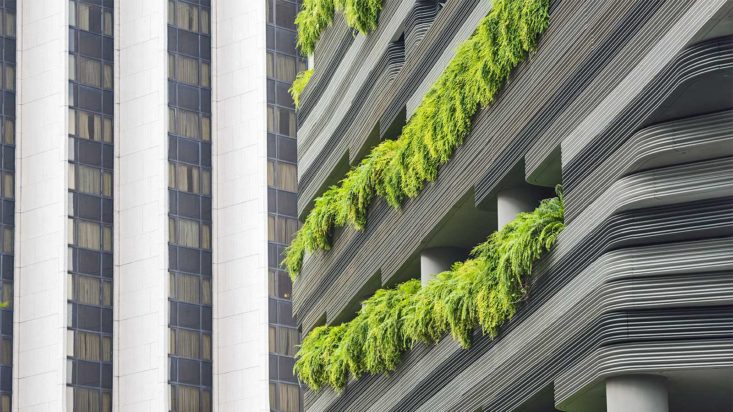Central to the problem, but key to the solution on climate
It is clear that ESG is more than a buzzword; ESG considerations are influencing more investment decisions by the day, but many are naturally questioning what impact they are actually having. Real estate and other real assets have naturally been a focus of both the US government and European Union’s fiscal stimulus policies in response to the pandemic.
And so, they should be. Invesco’s Global Real Estate team, which spans Europe, the US and Asia, highlights a number of important statistics in its recent whitepaper on the issue. According to the United Nations Environment Programme, tenants in buildings consume around 60% of all the world’s electricity, 40% of energy, 40% of resources and 25% of water. Similarly, research suggests that buildings are the single largest contributor to greenhouse gas emissions, representing as much as 30%.
Any discussion on ESG factors in investment portfolios must clearly start with property and real assets. According to Invesco, “the places where we live, and work are uniquely vital to the future of our planet,” and this is likely to remain relevant regardless of the boom in Working from Home during the pandemic. Invesco suggests that the only option for the move towards more “sustainable capitalism” is a greater consideration of both investors and stakeholders, including tenants in their diverse portfolio of buildings.
‘Investment managers are the principal agents of positive, ESG-led change’
This has been a key contributor to the ongoing shift from “brown” to “green” buildings, which have a greater focus on how tenants live in and use their real estate. As is always the case with ESG considerations, the focus is naturally on the E or Environmental portion, which is seemingly the easiest to measure against, in 2021 at least.
GRESB, or the Global Real Estate Sustainability Benchmark, provides the basis for reporting scoring and peer ranking of ESG management policies and is widely used across the industry; something that is lacking in equity markets. This provides the likes of Invesco with a fairly clear and broad set of factors to which they should be comparing themselves, including “resilience to environment challenges and the health and wellbeing of tenants and occupants.” According to the paper, in 2018, GRESB assessed 900 real estate funds representing nearly 79,000 assets across 64 countries. It ranked several Invesco Real Estate (IRE) funds as regional and/or sector leaders.
That said, the process is only just beginning, and must clearly move beyond basic environmental measurements. “Every element of ESG should be incorporated into the investment process.” Invesco suggests that the definition of a sustainable property should be in the context of their “broadly overarching fiduciary objectives” including the typical lowering of costs and improving financial performance but also “contribute to a better world.”
In this vein, they look beyond the basic ESG factors such as benchmarking water and energy consumption, energy ratings and regular monitoring, and towards more micro-level areas like a “managed approach to the procurement of energy” and a constant investment in new technologies. On the social front, property owners must engage their property managers and tenants on sustainability issues and look at the provision of services and amenities like green space and gyms to support healthier lifestyles.
“ESG investment decisions should be shaped not only by data but also by stakeholder engagement and a forward-thinking mindset,” which is why active management is key. While it may seem only a small step-change, advocating for such inclusions as “green clauses” in lease contracts is an important step in the right direction. It is also complemented by “interacting with the people who live and work in the properties….as well as the broader communities in which those properties exist,” as it is their choices that ultimately determine any asset’s performance.
A number of recent examples where the global team has put its ESG focus into practice include Williams Tower in Houston, which under Invesco’s management has reduced energy intensity per square foot by 24.7%. Similarly, 105 Edgeview, an office block in Colorado, has installed solar panels, electric-vehicle charging stations and currently irrigates the entire property using reclaimed local water.










